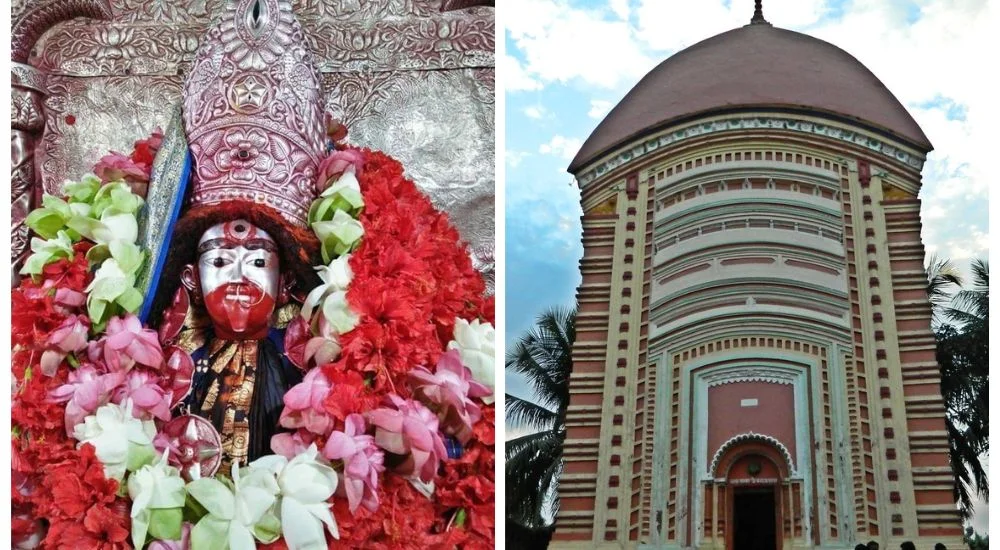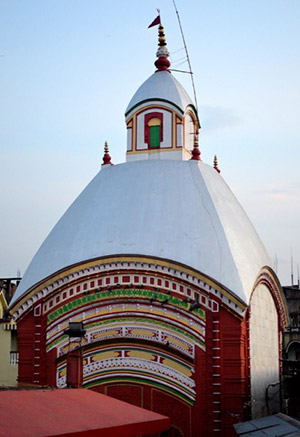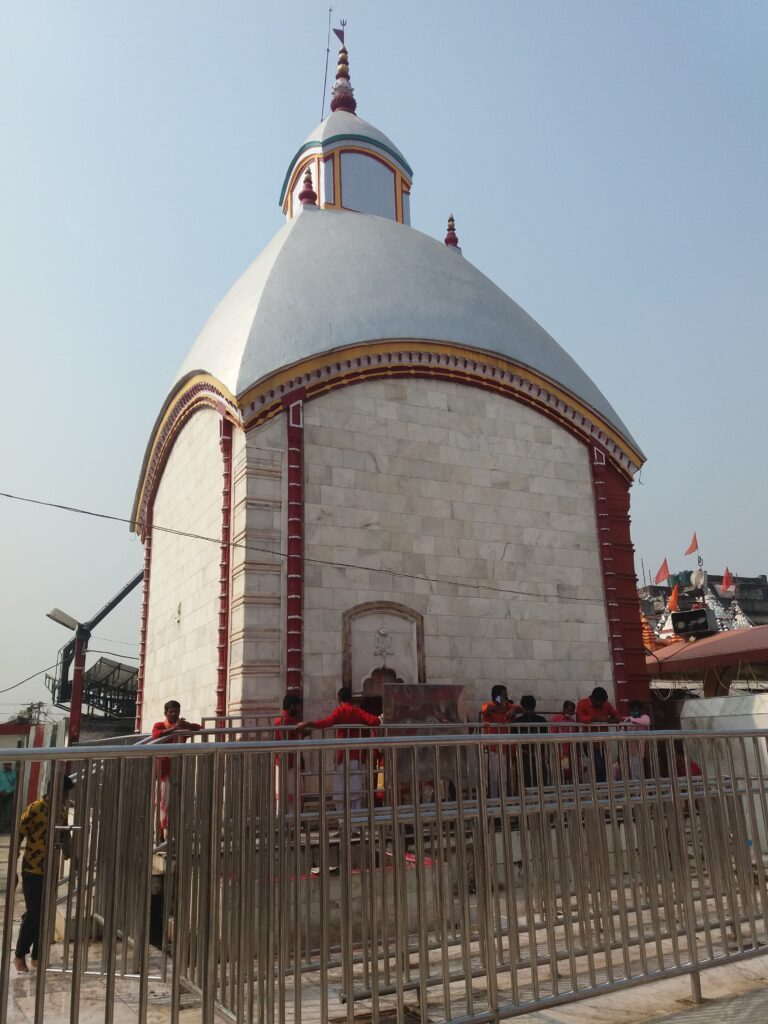
Introduction Of Tarapith
Tarapith: Birbhum is that small, quaint village that forms a district in West Bengal but at the same time also houses one of India’s most mystified temple towns-the treasure of the spiritual world – Tarapith. Venerated as the holiest of all Shakti Peethas, the temple worships Goddess Tara-the fiery goddess personified with all qualities of tenderness and puissance in every manner of worship.
Tara is the word for the term “Savior, also; and true to her name, she is worshiped to take her followers away from this round of birth and death. What adds an aura to this sacred precinct of Tarapith is a magical feel beyond religion, and all these extraor dinary fables seem to waltz in every single nook of this hallowed temple.
Origins at Mythology Levels
Self-Incineration of Sati and Shakti Peethas: This was the authentic mythology behind the history of Tarapith-a legendary story involving tragic Sati. Sati-the wife of the Lord Shiva-favoured death after her father, Daksha humiliated her husband in public in sacrifice fire and in the widely used myth; while carrying Sati’s corpse as a mangled body throughout cosmos, the world experienced grief through this devastated Shiva.
To pacify the grief of Lord Shiva and to hinder the cosmic annihilation, body parts of Durga were split into pieces using Sudarshan Chakra of Lord Vishnu and drops of body parts fell at several places which are popularly known as Shakti Peethas. It is considered to be one of the divine places where third eye of Sati fell. This has always been the tradition around Tarapith, which forms part of the mythological tale surrounding the sanctity of this temple.
Durga Tara : Tara is one of the Mahavidyas-a series of ten potent goddesses of Hindu Tantra-by whose name the worship of Durga Tara at Tarapith can be traced.
Tara is also shown as a fierce yet compassionate deity who provides protection, healing, and spiritual wisdom. Though her connection to the Sati myth may not be entirely direct, her existence in Tarapith and her connection to the Shakti Peethas has been established through centuries of worship.
The Mysticism of the Cremation Ground

Across the temple stands the cremation ground, commonly known as the Mahasmashana. There, as a belief prevails, Tantrism flourishes and in it, there is a legend also that Goddess Tara patrols this place at night. The sadhus and tantrics, men of the holy crew, do everything that seems contrary to human reason to the beholders. It whispers incantations and flickers of pyre flames which narrate tales about souls migrating to higher planes. It is life-death territory symbolizing the ultimate truth of existence.
Bamakhepa: The Mad Saint of Tarapith
No story of Tarapith can be narrated without referring to the great saint, Bamakhepa, whose life epitomizes devotion and spiritual power. The epithet “Mad Saint” refers to the unorthodox modes of worship and depth of association with Goddess Tara which Bamakhepa relishes. His love for the goddess was so all-embracing that, people say, she appeared before him as a person to guide him in his spiritual journey.
Even today, miracles of Bamakhepa are narrated at Tarapith. The villagers and the pilgrims talk about his healing power to the diseased, the capability to predict future and to bring goddess’s blessings to one’s devoted mind. His ashram in ash, not too far from the temple, still exists as a refuge for all the spiritually awakened seekers.
A Balancing Harmony of Faith and Folklore
Faith and folklore blend perfectly to give rise to the beauty of Tarapith. The air around the stones, the trees, or just about everywhere reverberates with stories about divine beings. Most devotees would narrate the fulfillment of a wish or even the miracle that is believed to be an inexplicable thing to happen since one visits the temple. Healing at Jivit Kund, a little pond near the temple, also cleanses individuals from evil energies as they take a dip there for treatment.
Festivals and Rituals
Kali Puja and Navaratri are those fairs where thousands of devotees queue up to pray to goddess and dressed in all best of garments accompanied by rhythmic rhythms of bhajans that generate divine vibes from every nook and corner of this place. This temple prasad is extremely sacred too. A lot of devotees even send it to close relatives and friends with a note that gets blessings for the latter.
- Time of Visit: For amicable weather and visitors, the ideal time of visit to Tarapith is during winters that are between October to March.
- Stay at hand: For few moderate stay facility providers are close-by for Tarapith Temple. Therefore, it won’t compromise to sell comfort due to spiritual distance in terms of accommodation price.
- Sacredness of It All: Some distances must be gained by just viewing the place on fire; hush, too, as it happens
Talking to locals: The locals have interesting stories and insights regarding the history of myths of the temple; do not hesitate to get into conversation
Conclusion
It is so much more than a pilgrimage centre; rather, it’s the abode of faith that meets magic, where mythology breathes in, and the very divine essence of Goddess Tara reaches into hearts and touches them in ways that no human mind could fathom. And may be the most revered too, but the form of devotion any kind would have you see Tarapith. So, take that journey to this mystical land and let the goddess weave her magic into your life.

Frequently Asked Questions About Tarapith
Q: What is unique about Tarapith compared to other Shakti Peethas?
A: It is a cremation ground associated with Tantric rituals, the mystic cremation ground, and the myths of Bamakhepa. It is basically a hub for divine magic and spiritual awakening.
Q: Is it safe to visit the cremation ground?
A: Safe, especially when there. Just tell people to go along with a guide or some local who is knowledgeable of the cultural settings there.
Q: Is Tarapith accessible to Non-hindus?
A: Oh Absolutely! The darshan at Devi Tara, also referred to as Dakshinakali, within Tarapith is open to all seekers who are looking to embrace the spiritual essence it embodies.
Q: Any dietry restriction needed to be adopted prior to Darshan at Tarapith Durga Temple?
A: Avoid all kind of Non vegetarian food items, Liquor for maintaining sanctity of pilgrimage.